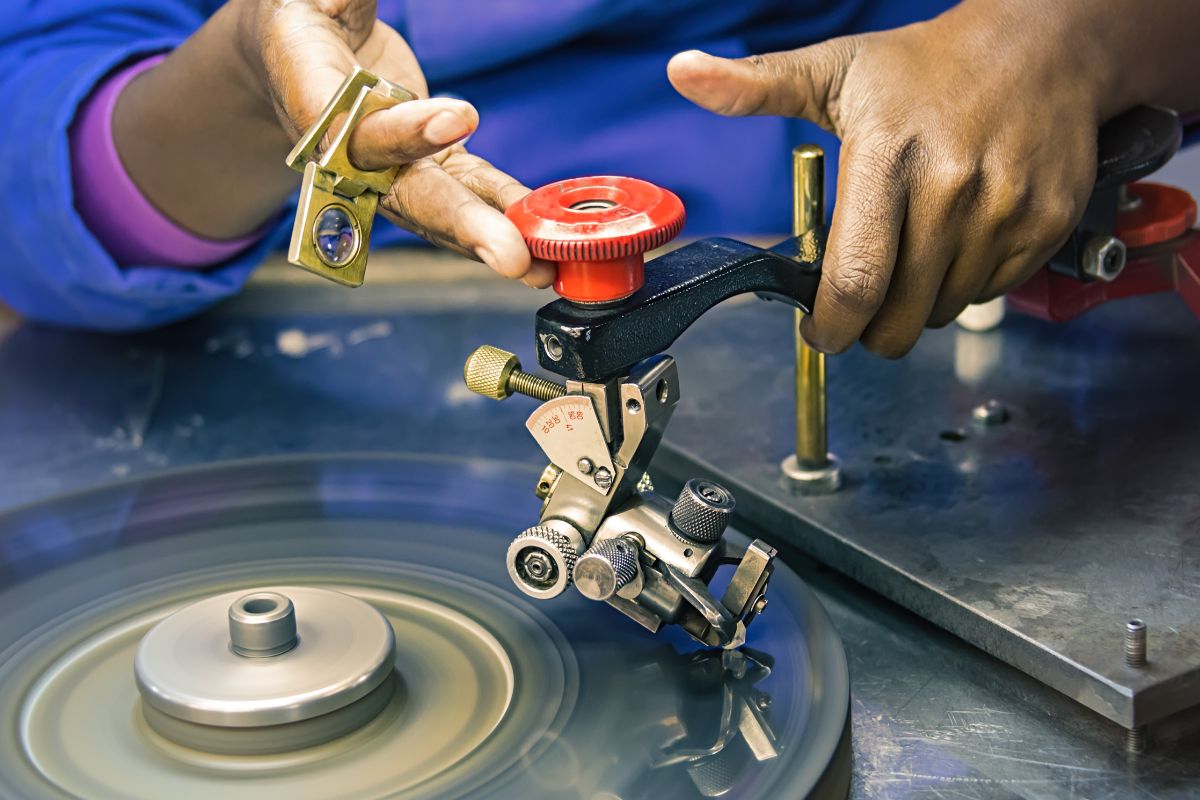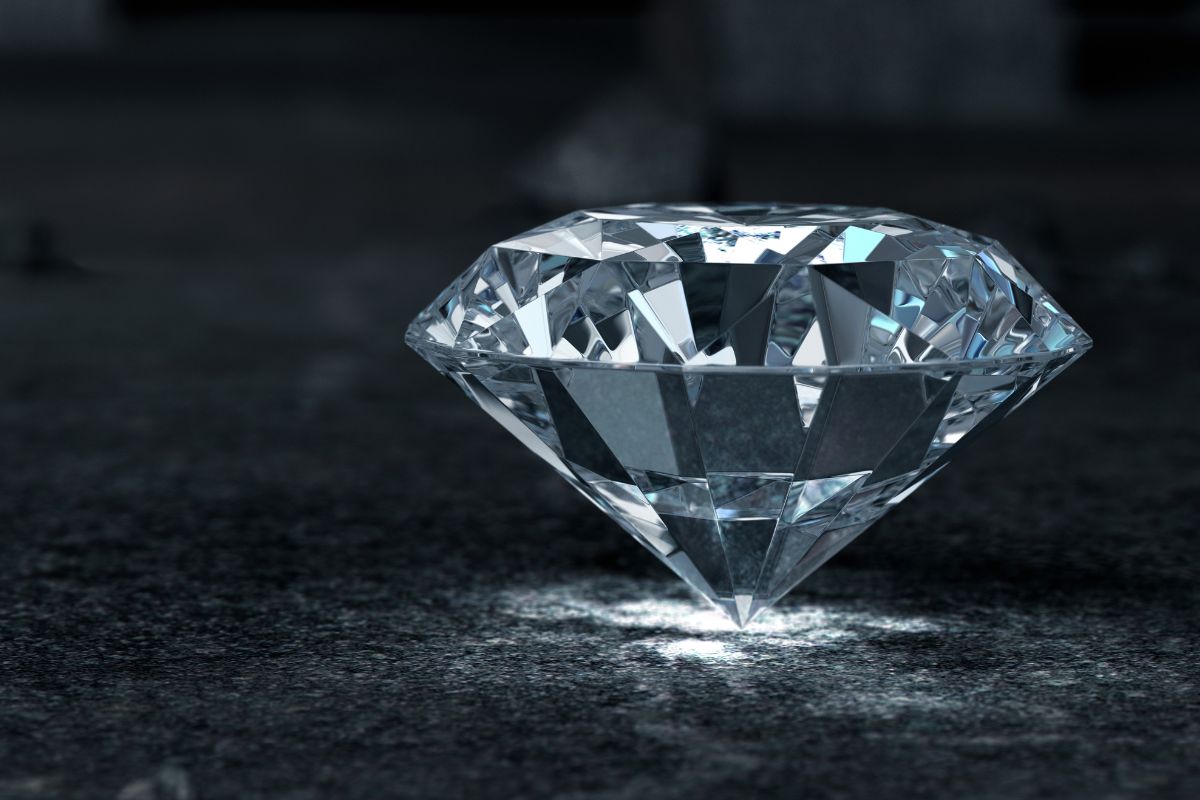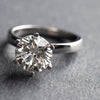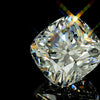
Diamond Proportion: Mastering the Essentials of Diamond Cut Quality
When discussing the intricacies of diamonds, one aspect that frequently captures my attention is the concept of diamond proportion. This term refers to the ratios and relative measurements that determine a diamond's overall shape and how well it is cut. Proper proportions are crucial because they affect a diamond's brilliance, fire, and scintillation—attributes that define the beauty and allure of a diamond.
Table Of Contents
- Basics of Diamond Proportions
- Components Affecting Proportions
- Effect of Proportions on Diamond Appearance
- Standard Proportion Guidelines
- Impact on Diamond Value and Pricing
- Choosing the Right Diamond Proportions
- Reading a Diamond Proportions Chart
- Proportions in Context
- The Role of Technology and Certification
- Diamond Proportion Myths and Misconceptions
- Frequently Asked Questions
I understand that achieving the ideal proportions is both an art and a science, a meticulous process that transforms rough stones into mesmerizing gems. A well-proportioned diamond can reflect light in such a way that it appears to have an inner fire and life. On the other hand, diamonds that are too deep or too shallow relative to their size may lack the optimal sparkle or could exhibit undesired dark areas.
Throughout my exploration of diamond proportions, I have discovered that they vary widely among different diamond shapes and cutting styles. For instance, the proportion of the facets on a round brilliant cut differs markedly from those on a princess or emerald cut. It is also fascinating to note how cutting techniques have evolved over time to maximize the aesthetic potential of diamonds, reflecting advances in technology and changing tastes in jewelry.
Basics of Diamond Proportions
When I assess a diamond's beauty and light performance, I closely examine its proportions—crucial metrics that affect its overall appearance.
Definition of Proportions
| Aspect | Description |
|---|---|
| What is Proportion? | The proportions of a diamond refer to its relative measurements, including table size, crown height, pavilion depth, and more. |
| Importance | Proper proportions are crucial for optimizing the diamond's brilliance, fire, and scintillation, enhancing its overall appearance and value. |
| Table Size | The table size, the flat facet on the top of the diamond, affects how much light enters and exits the stone, impacting its sparkle. |
| Crown Height | The crown height, the distance between the table and the girdle, influences the diamond's face-up appearance and light reflection. |
| Pavilion Depth | The pavilion depth, the distance from the girdle to the culet, determines the diamond's light dispersion and overall brilliance. |
Proportions in diamonds refer to the relationship between the different dimensions of a diamond—table size, depth, crown height, pavilion depth, and the diamond's width and height. For instance, the table percentage is the width of the top facet (table) compared to the overall width of the diamond. Depth is calculated as a percentage of the diamond's total height from the table to the culet. Crown height is the measurement from the top of the girdle to the table, and pavilion depth is the distance from the bottom of the girdle to the culet.
Importance in Diamond Valuation
The proportions of a diamond are essential in evaluating its quality and value. Precision in these measurements contributes to the stone's brilliance and fire. A diamond with ideal or excellent proportions reflects light better, resulting in a more visually appealing gemstone. For example, a diamond with a table that's too large or too small, or a crown that's too high or low, can detrimentally impact the stone's ability to reflect light, reducing its desirability and worth.
Components Affecting Proportions

| Component | Description |
|---|---|
| Table Size | The size of the flat facet on the top of the diamond, which affects the amount of light entering and exiting the stone. |
| Crown Height | The distance between the table and the girdle, influencing the diamond's face-up appearance and light reflection. |
| Pavilion Depth | The distance from the girdle to the culet, determining the diamond's light dispersion and overall brilliance. |
| Girdle Thickness | The width of the girdle, impacting the diamond's durability and visual appearance. |
| Culet Size | The size of the facet at the bottom of the diamond, affecting light reflection and the diamond's appearance. |
In creating the perfect diamond, each physical aspect plays a crucial role in its overall appearance and quality. As a gemologist, I would guide you through each component and show you how they contribute to a diamond's beauty and brilliance.
Facets and Their Role
The facets of a diamond are its flat, polished surfaces. I understand that each facet must be meticulously crafted at precise angles to ensure maximum light reflection within the diamond. A well-cut diamond with properly aligned facets will display superior brilliance.
Crown
The crown is the top part of the diamond, extending from the girdle to the table. Its primary function is to refract entering light to different parts of the diamond. I pay special attention to the crown angle and crown height because they significantly affect the diamond’s interaction with light.
Pavilion
Below the girdle lies the pavilion, which serves to reflect light back through the crown to the viewer's eye. The pavilion angle is vital; if too steep or too shallow, light will not reflect optimally, resulting in less brilliance.
Table
The table is the largest facet of a diamond and plays a pivotal role in its light performance. I ensure that the table percentage—the width of the table relative to the diameter of the diamond—is ideal, as it impacts how light bounces within the diamond and back to the observer.
Girdle
The girdle is the outer edge of the diamond where the crown and pavilion meet. I ensure that the girdle thickness is neither too thin, risking chips, nor too thick, as it can affect the diamond proportion and overall aesthetic.
Culet
The culet is the small facet at the bottom of the pavilion and it should be proportionate to prevent light leakage and ensure stability. A large culet can be visible and detract from the visual appeal, while a very small or absent culet can make the diamond prone to damage.
Diameter
The diameter of a diamond is its width measured from edge to edge through the girdle. It must be in correct proportion to other components such as the table size and girdle thickness to maintain the intended shape and optimize the diamond’s proportions and overall symmetry.
Effect of Proportions on Diamond Appearance

As a gemologist, I've learned that the proportions of a diamond are fundamental to its beauty. They directly influence how light interacts with the stone, which in turn affects its sparkle and visual appeal.
Brilliance and Fire
The way a diamond is cut determines its brilliance, which is the total light reflected from a diamond, and fire, which is the dispersion of light into the colors of the spectrum. Precise mathematical calculations are used to create proportions that maximize the balance between white light reflection and colorful light dispersion. For example, the Modeling the appearance of the round brilliant cut diamond: An analysis of brilliance discusses how ideal cut proportions can result in higher white light return (WLR), enhancing both brilliance and fire.
Scintillation
Scintillation involves the flashes of light or the sparkle you see when a diamond moves. My experience tells me that a diamond's scintillation is greatly impacted by the arrangement and size of its facets. If the facets are correctly aligned, the diamond will exhibit a more dynamic play of light. A diamond's scintillation is its ability to reflect light in a way that creates sparkle, enhancing its overall appearance.
Light Performance
The overall light performance of a diamond describes how effectively a diamond interacts with light to create visual effects such as brilliance, fire, and scintillation. Diamonds that reflect light powerfully convey a mesmerizing appeal. I've noticed that tools like the Holloway Cut Adviser can predict light performance based on a diamond's proportions, suggesting that precise cutting to optimal proportions is key in enhancing a diamond's ability to reflect light effectively.
Standard Proportion Guidelines
| Proportion | Optimal Range |
|---|---|
| Table Percentage | 53% - 63% |
| Total Depth Percentage | 58% - 62% |
| Crown Angle | 30° - 35° |
| Pavilion Angle | 40.6° - 41.0° |
| Girdle Thickness | Thin to slightly thick |
Diamonds crafted to meet Standard Proportion Guidelines are known for their superior brilliance, fire, and scintillation. These standards are the benchmarks that help jewelers and consumers alike determine the quality of a diamond cut. Let's dive into what constitutes these ideal proportions and the science behind them.
Ideal Proportions
The term ideal proportions refers to the precise geometric relationships between the different parts of a diamond. These proportions maximize the diamond's ability to reflect and refract light, ultimately contributing to its overall beauty and value. The ideal cut is one that adheres to these specific parameters, ensuring a balance between brightness, fire, and sparkle.
The Tolkowsky Theorem
Marcel Tolkowsky revolutionized diamond cutting with his Tolkowsky Theorem in 1919. His calculations for ideal diamond proportion took into account the path of light through a diamond and how it impacts the stone's brilliance. Tolkowsky's formula established a set of guidelines that have shaped the industry's understanding of an ideal cut diamond.
GIA and AGS Cut Grading
Two prominent grading entities, the Gemological Institute of America (GIA) and the American Gem Society (AGS), have developed their own cut grades. The GIA's grading system includes grades such as Excellent, Very Good, Good, Fair, and Poor. The AGS uses a 0 to 10 scale, with 0 being the highest grade, denoting an ideal cut. Both systems are designed to help consumers discern the cut grade of a diamond and understand how it compares to ideal cut proportions.
Impact on Diamond Value and Pricing
| Carat Weight | Color Grade | Clarity Grade | Cut Grade | Average Price ($) |
|---|---|---|---|---|
| 0.50 | D | IF | Excellent | $5,000 |
| 1.00 | F | VVS1 | Very Good | $10,000 |
| 1.50 | G | VS2 | Good | $15,000 |
| 2.00 | H | SI1 | Fair | $20,000 |
| 2.50 | J | SI2 | Poor | $25,000 |
When examining diamonds, two critical factors, cut quality and carat weight and proportions, significantly influence their value and pricing. My knowledge in gemology clarifies how these factors play a decisive role.
Cut Quality and Price
Cut quality directly correlates with a diamond's brilliance and its overall appeal, heavily impacting its price. A superior cut quality results in a diamond's better light performance, making it more desirable and therefore more expensive. Pricing models often reflect the precision of the cut, with higher grades commanding considerable premiums. For instance, a diamond with a cut graded "Excellent" can fetch markedly higher prices than those with lower cut grades, even if other factors like carat weight are similar.
Carat Weight and Proportions
Carat weight is often mistaken as the sole indicator of a diamond's size, but it's actually a measure of weight. However, two diamonds of identical carat weight can appear different in size due to their cut proportions. Diamonds that are cut too deep or too shallow may hide weight below the surface, making them look smaller. As the carat weight increases, the price does not simply scale linearly but tends to increase exponentially. This is because larger diamonds are rarer and in higher demand. Moreover, proportions affecting the balance between depth and width significantly influence light reflection within the stone, impacting its clarity and color performance, thus further affecting the diamond's overall quality and value.
Choosing the Right Diamond Proportions

When I select a diamond, I pay close attention to its proportions, as they heavily influence the stone's brilliance, fire, and overall presence.
Selecting a Shape
Each diamond shape has unique proportions that optimize its beauty. Round diamonds are most popular for their brilliance, and ideal proportions are critical. For example, a round brilliant cut diamond with a good balance between its table size and pavilion angle will often have superior brilliance. For other shapes like oval, pear, and marquise, I look for length-to-width ratios that appeal to my aesthetic preferences while maintaining a harmonious balance.
Analyzing Cut Grades
The cut grades of a diamond, such as excellent, very good, good, fair, and poor, reflect its proportions and how well it's been cut. An excellent cut grade in a round diamond means it closely follows ideal proportions for optimal light reflection. In fancy shapes like emerald or cushion, I consider these grades as guidelines for selecting a well-proportioned stone that exhibits maximum beauty.
Considering Length-to-Width Ratios
For fancy shape diamonds like oval, pear, and marquise, the length-to-width (l/w) ratio is a critical proportion. Here are common l/w ratios for some shapes:
- Oval: An l/w ratio of 1.30 to 1.40 gives a classic look.
- Marquise: A ratio of 1.85 to 2.10 is traditional.
- Emerald: Rectangular shapes often have a ratio of 1.50 to 1.75.
These ratios are not strict rules but starting points for finding a diamond that aligns with my personal preferences. For instance, a higher l/w ratio in a marquise diamond may yield a sleeker look, while a lower ratio produces a wider, more subtle effect.
Reading a Diamond Pro portions Chart
Table Percentage
Excellent: 53-60%
Very Good: 54-58%
Good: 55-63%
Fair: 56-65%
Poor: 57-70%
Crown Angle
Excellent: 33.7-35.8°
Very Good: 32.2-36.6°
Good: 30.7-37.0°
Fair: 29.2-37.5°
Poor: 27.7-38.0°
Pavilion Depth Percentage
Excellent: 42.2-43.8%
Very Good: 41.0-44.7%
Good: 39.8-46.0%
Fair: 38.5-47.2%
Poor: 37.2-48.5%
When I approach a diamond proportions chart, my goal is to understand how well a diamond has been cut in terms of its symmetry, balance, and light return. These charts display the ratios and measurements critical to a diamond's appearance.
Firstly, Table Percentage is pivotal. It represents the width of the diamond's top facet, the table, relative to the diamond's average girdle diameter. Ideal table percentages vary based on the shape of the diamond, but for the popular round brilliant cut, I look for a table percentage that falls within the 52-62% range.
Next, I consider the Depth Percentage, which indicates the height of the diamond from the culet to the table, as a percentage of its girdle diameter. The depth is influential in determining how light travels within the diamond, which affects the sparkle. An optimal depth percentage is generally between 59% and 62.6% for round brilliants.
To assess fire and brilliance, the Crown and Pavilion Angles are integral. The crown angle influences the diamond's dispersion of light, whereas the pavilion angle contributes to the stone's brightness. For a round brilliant diamond, the crown angle is ideally between 34°-35°, and the pavilion angle should be between 40.6°-41°.
Lastly, the Girdle Thickness is noted on the chart, which should be neither too thin, to avoid chipping, nor too thick, as it may negatively affect the diamond's proportion.
In summary, by closely examining the proportions chart and understanding the optimal ratios, I can assess the potential quality of a diamond's cut.
Proportions in Context
In my experience, proportions play a pivotal role in the aesthetics and the structural integrity of diamond settings, particularly in engagement rings where every detail contributes to the ring's overall appearance. Proportions can either enhance or detract from an engagement ring's beauty, which is why I find it essential to discuss.
Engagement Ring Considerations
When I advise clients on engagement rings, I emphasize the importance of diamond proportions. It's not just about the carat weight; it's how the stone's dimensions interact with light and the setting that really matters. Table-specific measurements like the table percentage, depth percentage, and the length-to-width ratio must be taken into account. These numbers affect how the diamond reflects light, creating that sought-after sparkle. For round diamonds, a table percentage of 54-57% and a depth percentage of 60-62.5% are commonly seen as ideal.
- Ideal table percentage: 54-57%
- Ideal depth percentage: 60-62.5%
Different Proportions for Different Settings
The choice of setting can influence or be influenced by the diamond's proportions. For instance, a bezel setting might better suit a stone with a higher depth percentage, as it can protect the edges. Conversely, shallow stones might be more prone to looking larger but require settings such as a prong or pavé that allow more light to enter the diamond. Each setting style has its own compatibility with diamond shapes and proportions:
- Bezel setting: Accommodates high depth percentage
- Prong/Pavé setting: Ideal for shallower stones
My approach is always to match the setting to the diamond's proportions, optimizing the engagement ring's overall appearance and ensuring stability. ItalicI remain attuned to how these intricate decisions influence an engagement ring's final presentation.
The Role of Technology and Certification

In the diamond industry, my focus on precision and adherence to standards is encapsulated by the integration of advanced technology and rigorous certification processes. These elements are crucial for ensuring the quality and authenticity of diamonds.
Advances in Cutting Techniques
I understand that the cutting techniques applied to diamonds directly influence their symmetry, brilliance, and overall market value. Modern technology has enabled the development of sophisticated tools that allow for precise cuts, tailored to enhance the diamond's polish and the optimal display of the 4Cs (Carat, Cut, Color, Clarity). Laser cutting methods offer a level of accuracy that traditional manual cutting cannot replicate, resulting in diamonds that meet high standards of proportion and finish.
Certification and Documentation
Certification plays a pivotal role in the diamond market. It serves as a testament to the diamond's quality and authenticity. I rely on established entities such as the Kimberley Process to segregate conflict diamonds from ethically-sourced gems. Furthermore, each diamond is accompanied by documentation that verifies its characteristics according to the 4Cs. This documentation, often provided by authorities like the GIA (Gemological Institute of America), assures buyers of the diamond's value and origins.
Diamond Proportion Myths and Misconceptions

When discussing diamond proportions, I've come across several myths and misconceptions that can mislead you about the true quality and appearance of a diamond. These fallacies often revolve around the way a diamond handles light — its reflection and refraction — which are crucial to a diamond’s brilliance and fire.
- A diamond with larger proportions is always better: This is a misconception. The diamond's proportions must be balanced to ensure it reflects and refracts light correctly for optimal sparkle.
- More facets mean more brilliance: Simply adding facets doesn't guarantee increased brilliance. Each facet must be cut with precision to maintain the balance between light reflection and refraction.
Misconceptions about Light and Appearance:
- All diamonds reflect light equally: I've learned that this isn't the case. How a diamond reflects and refracts light is highly dependent on its cut and proportions.
Reality Checks:
- Diamonds are lifeless without proper proportions: True. A poorly proportioned diamond may not interact with light effectively, resulting in a lifeless appearance.
- The overall appearance depends solely on carat weight: This is incorrect. The overall appearance is greatly influenced by how the diamond reflects and refracts light, which is dictated by its proportions.
To distinguish between myth and fact, consider how light interacts with the diamond. A well-cut diamond with balanced proportions is designed to direct as much light as possible through the top of the stone, enhancing its reflection and refraction. It’s these factors, not just size or weight, that contribute to a diamond's fiery overall appearance.
Frequently Asked Questions
Understanding diamond proportions is key to evaluating their quality and beauty. These metrics serve as guidelines that help in assessing a diamond's potential to reflect light with optimal brilliance and fire.
What is the ideal range for proportions in a round brilliant diamond?
In a round brilliant diamond, the ideal table percentage ranges from 54% to 57%, and the depth percentage should ideally be between 61% and 62.5%. These proportions maximize the diamond's ability to reflect light.
How can the cut of a diamond affect its proportions and overall appearance?
The cut of a diamond greatly influences its proportions by determining the diamond's facet angles and its ability to reflect light. An excellent cut can result in a diamond with both high brilliance and an attractive appearance.
What role do length to width ratios play in the visual appeal of oval diamonds?
For oval diamonds, the length to width ratio affects the diamond's outline and appeal. A classic oval shape is typically associated with ratios between 1.3 and 1.5, offering a pleasing balance between length and width.
How is the table percentage of a diamond calculated and why is it significant?
The table percentage of a diamond is calculated by dividing the width of the table (the flat top facet) by the width of the diamond at its widest point. This figure plays a significant role in light return, which impacts the diamond's brilliance.
Can the depth percentage of a diamond impact its brilliance and fire?
Yes, the depth percentage—which is the height of the diamond divided by its average diameter—can significantly impact the diamond's brilliance and fire. If a diamond's depth percentage is too high or too low, it can cause light to leak out, reducing sparkle.
What are the industry standards for evaluating a diamond's cut based on its proportions?
The industry uses cut grading scales, established by organizations like the GIA, that take into account a diamond's proportions such as table and depth percentages, as well as crown angle and pavilion depth, to rate the cut from ‘Excellent’ to ‘Poor’.
Checkout some of our top collections:
Leave a comment
Please note, comments must be approved before they are published.










